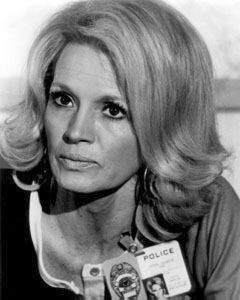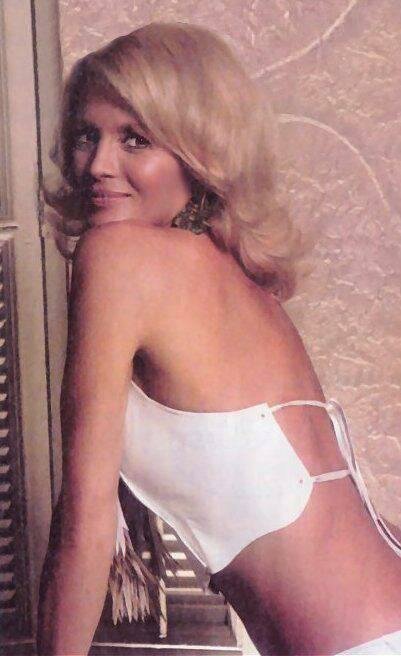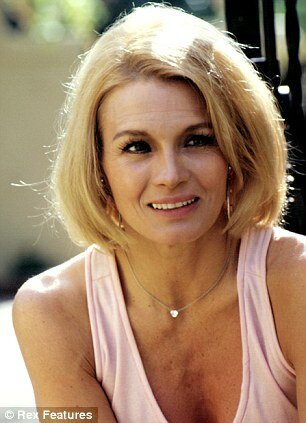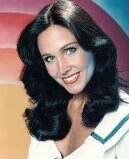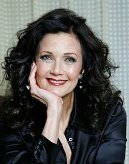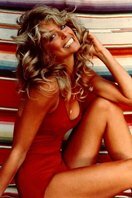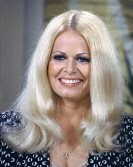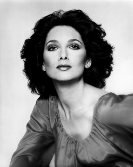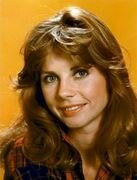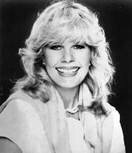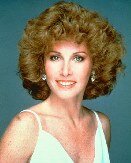Pepper was such a huge role model that she inspired a record number of young women to apply to US police academies during the four-year period run of “Police Woman.”
“It premiered on a Friday night, where young girls could stay up later and get the role model part of it,” Angie said. “Also, younger boys were fans as well, I guess for different reasons.”
“Police Woman” was a No. 1 rated show, and fans included President Gerald Ford, who once rescheduled a White House news conference so it wouldn't conflict with the Friday night airing of the program.
The series was born when Angie guest-starred as a police woman in the “Police Story” anthology in 1974, a time when a woman in a uniform was unique on television.
Angie learned from her make-up man on the “Police Story” set that the producers were contemplating creating a “Police Woman” series. She later said that she was reluctant to work in a weekly series and producer David Gerber coaxed her into taking the role, telling her the show would make her a household name.
“When 'Police Woman' came along, it was great to play that role, but I wasn't aiming for it,” she told the website www.hollywoodchicago.com. “I was just striving to keep my career going.”
Co-star Earl Holliman, who played Pepper's commanding officer Sergeant Bill Crowley, recalled with interviewer Scott Holleran that Angie was “so beautiful, attractive and sexy, and she had a marvelous sense of humor and a great vulnerability,” he said. “There was something about her you wanted to protect, a little girl quality, that made you want to put your arm around her and say it was going to be OK.”
Angie wasn't a twenty-something youngster on “Police Woman.” She was 43 when the show started and was still considered a sex symbol, a remarkable feat for a woman of that age in the 1970s.
Angie was born in Kulm, North Dakota and her family moved to Burbank when she was 11. She aspired to follow in her father's footstep – he was a newspaper publisher and writer – by becoming a writer.
Angie attended Glendale Community College and took a job as a secretary. After she entered several beauty pageants – placing second but never winning – she was offered a gig as a show girl on Jimmy Durante's variety TV show. Angie kept her day job, worked on Durante's show, and began taking acting classes four nights a week.
Within a year she was getting acting jobs. Westerns were the rage in the 1950s so Angie appeared in a number of Western films and TV shows. Her big break came when Howard Hawks cast her as “Feathers,” a flirty gambler starring opposite John Wayne in 1959's “Rio Bravo.” Angie later called it the most important film of her career.
“I found my career out of the blue. I got hooked into show business a little later than most, and with no connections or background in it,” she said in the www.hollywoodchicago.com interview. “So everything I got after that I felt lucky getting because I never aimed too high. I aimed realistically.
“Everything fell my way, and within four years I was cast opposite John Wayne in Rio Bravo. That was a fairly fast track considering how shortly I’d been in the business.”

No. 15
Classic TV Beauties 1970s Countdown
ANGIE DICKINSON as Pepper Anderson in "Police Woman"
In the pre-Charlie's Angels era, Pepper was the hottest cop on TV, a blonde beauty who created the prototype of the hard-nosed but sexy female police officer.
.
Pepper often went undercover as a prostitute or a waitress or dancer to get close to suspects, and “Police Woman” was the first prime time drama to feature a female police officer as the star.
Several years after the series aired, a slew of law enforcement-oriented shows – “Charlie's Angels,” “Wonder Woman,” “The Bionic Woman” – were created featuring beautiful women as police officers or private investigators
She was even chosen for film roles that highlighted her sex appeal after she'd turned 40. As a smoking hot high school teacher, she appeared in several nude scenes in “Pretty Maids All in a Row.”
A couple of years later, in 1974's “Big Bad Mama,” a low-budget ripoff of "Bonnie and Clyde," the 43-year-old Angie undressed for the camera again, playing a sexy bootlegger who enters a life of crime.
Understanding that sex sells helped make Angie a successful actress. In 1962 she won the Hollywood Golden Garter Award for best legs, and in 1999 Playboy ranked her No. 42 in the 100 Sexiest Stars of the Century.
"Are my legs exploited? Well, that's all I have got to sell,” she said in a People magazine interview in 1978. “I always felt lucky, because in this business if you don't get exploited, you don't get a job"
“When I started everything was the legs and the pin-up pictures,” she said. “I had nothing else to offer at the time. I had to prove that I was a good actress.”
She became lovers with Frank Sinatra – “My mother was against me being an actress – until I introduced her to Frank,” she famously said – and was cast in the original “Ocean's Eleven.”
Although she stayed busy working, Angie couldn't find the right role.
“They couldn’t peg me. I wasn’t this, I wasn’t that. I wasn’t voluptuous like Marilyn Monroe…But that was okay,” she told the Newark Star-Ledger in 2010. “If you’re only trading on looks and your body, that’s only going to go so far. But that was never my bag. I was always about the whole package.”
She signed a seven-year contract with Universal Studios and was awarded a plum role with Gregory Peck in 1963's “Captain Newman, M.D.” but Angie still wasn't getting offered what she felt were attractive roles.
“Once again, they didn’t know what to do with me. I could have done ‘Father Goose’ with Cary Grant. I could have done ‘Bedtime Story’ with Marlon Brando. There were a lot of projects they could have put me in. But they didn’t know what I could do, or they didn’t like me, so I never got those parts.”
“Police Woman” ran for four seasons, 1974-78. Angie won a Golden Globe and was nominated for an Emmy three successive years.
Angie's most memorable role after ”Police Woman,” was in Brian DePalma's Hitchcock thriller tribute, “Dressed to Kill,” released in 1980. Angie played a beautiful and wealthy but sexually frustrated New York housewife who is bludgeoned to death in the film's first 30 minutes.
Angie felt that “Dressed to Kill” was not appreciated.
“Because by those who have seen it, it's quite admired,” she said in the Wall Street Journal. “Because it's scary as hell. But I don't think it was actually the hit that it would be today.”
Summing up her career, Angie said in 2009, “I was lucky. I came along at the right time for so many great things. I met some great stars and stayed friends with many and lovers with some. It was a fantastic life, really. And it still is.”
